The rugged terrain of South Dakota holds treasures both above and below ground. From towering presidential faces to mysterious underground labyrinths, this state offers adventures that blend natural wonders with human history. Pack your hiking boots and camera for an unforgettable journey through the Mount Rushmore State’s most captivating destinations.
1. Mount Rushmore National Memorial
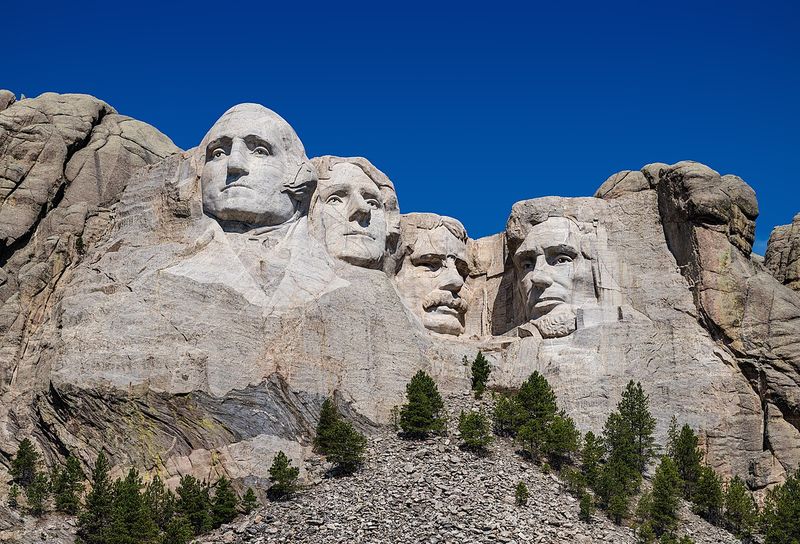
Standing before the colossal granite faces of Washington, Jefferson, Roosevelt, and Lincoln creates an undeniable sense of American pride. The 60-foot sculptures took 14 years to complete, with sculptor Gutzon Borglum directing a team of 400 workers through dangerous conditions.
The Presidential Trail offers perfect photo opportunities while the evening lighting ceremony adds dramatic shadows to the presidential visages. Visit the sculptor’s studio to glimpse Borglum’s original models and tools.
Summer brings crowds, so arrive early or consider an off-season visit for a more contemplative experience. Don’t miss the Avenue of Flags representing all 50 states, territories, and districts of the United States.
2. Badlands National Park
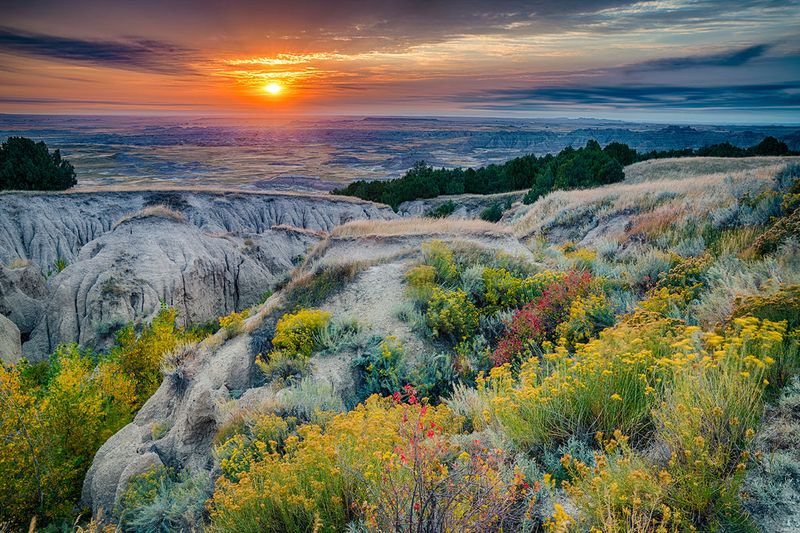
Ancient seabeds transformed into sharp spires and colorful buttes create an otherworldly landscape that earned its name from early travelers. The Lakota called it “mako sica” (land bad), while French fur trappers termed it “les mauvaises terres à traverser” – difficult land to travel.
Sunrise bathes the striped formations in golden light, revealing layers of geological history spanning 75 million years. Bighorn sheep navigate precarious ledges while bison roam the mixed-grass prairie.
The Fossil Exhibit Trail showcases remains of ancient creatures that once called this area home. For an unforgettable experience, camp beneath star-filled skies in one of the darkest night viewing areas in the country.
3. Wind Cave National Park
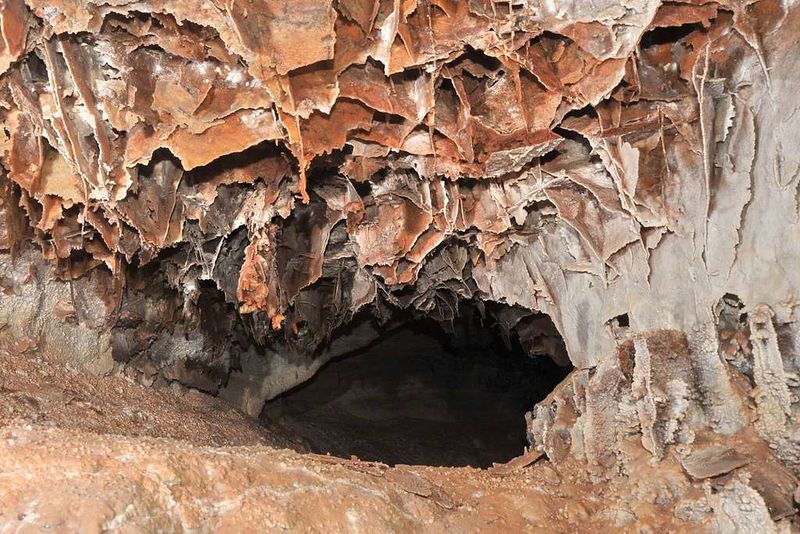
Beneath rolling prairie hills lies one of the world’s longest cave systems, where air whistles through a single natural entrance. Discovered by brothers Jesse and Tom Bingham in 1881, the cave earned its name from the whistling sound created by barometric pressure changes.
Rare boxwork formations – delicate honeycomb-patterned calcite – adorn the ceilings, with Wind Cave containing 95% of all known boxwork on Earth. Rangers lead tours through narrow passages revealing underground lakes and crystalline formations.
Above ground, prairie dogs stand sentinel near their burrows while bison herds graze across 28,295 acres of mixed-grass prairie. The surface ecosystem and subterranean world create a complete and complex ecological package unlike anywhere else.
4. Jewel Cave National Monument
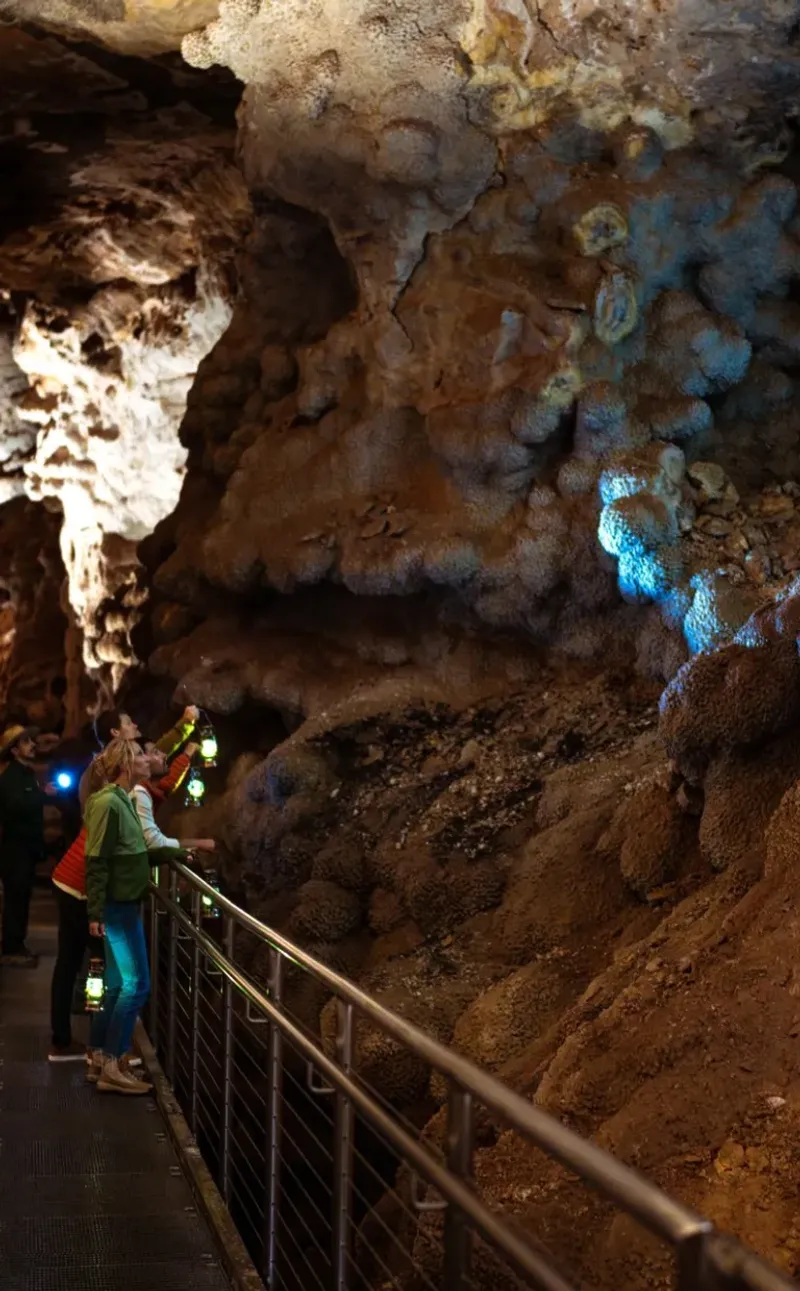
Glittering calcite crystals earned this subterranean wonder its name, sparkling like gems in the lamplight. As the third-longest cave system on Earth with over 208 miles mapped, new passages are still being discovered by adventurous spelunkers.
Frank and Albert Michaud stumbled upon the entrance in 1900, initially hoping to mine it for minerals. Instead, they found a natural treasure far more valuable. The Historic Lantern Tour recreates early exploration conditions, with flickering lights casting mysterious shadows across nailhead spar and dogtooth crystals.
For those preferring sunshine to stalactites, surface trails wind through ponderosa pine forest where mule deer and wild turkeys make regular appearances. The visitor center houses fascinating displays about cave formation and ongoing exploration efforts.
5. Custer State Park Wildlife Loop
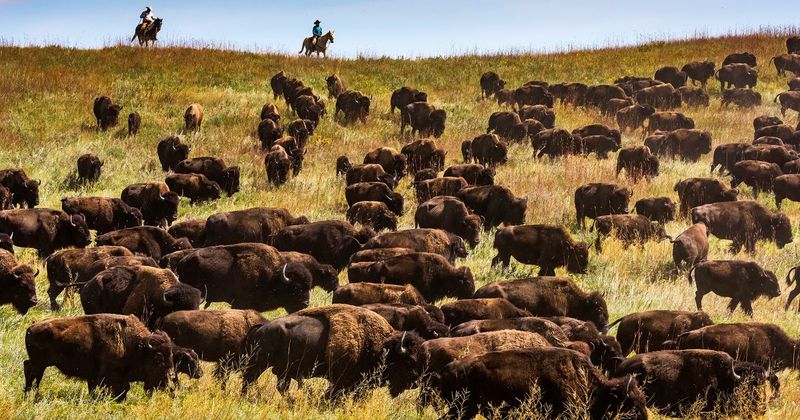
“Begging burros” might approach your vehicle along this 18-mile scenic drive, descendants of pack animals once used for Mount Rushmore tours. These charismatic donkeys have learned that tourists often carry treats, creating memorable (if slightly mischievous) encounters.
The park’s crown jewel is its bison herd – nearly 1,400 strong – roaming freely across rolling prairie. September brings the annual Buffalo Roundup, where cowboys and cowgirls drive the thundering herd for health checks and herd management.
Sylvan Lake’s granite-framed waters offer swimming and paddleboarding opportunities, while Needles Highway presents heart-stopping hairpin turns between towering rock spires. For wildlife photographers, dawn and dusk provide optimal light and animal activity along the loop road.
6. Spearfish Canyon Scenic Byway
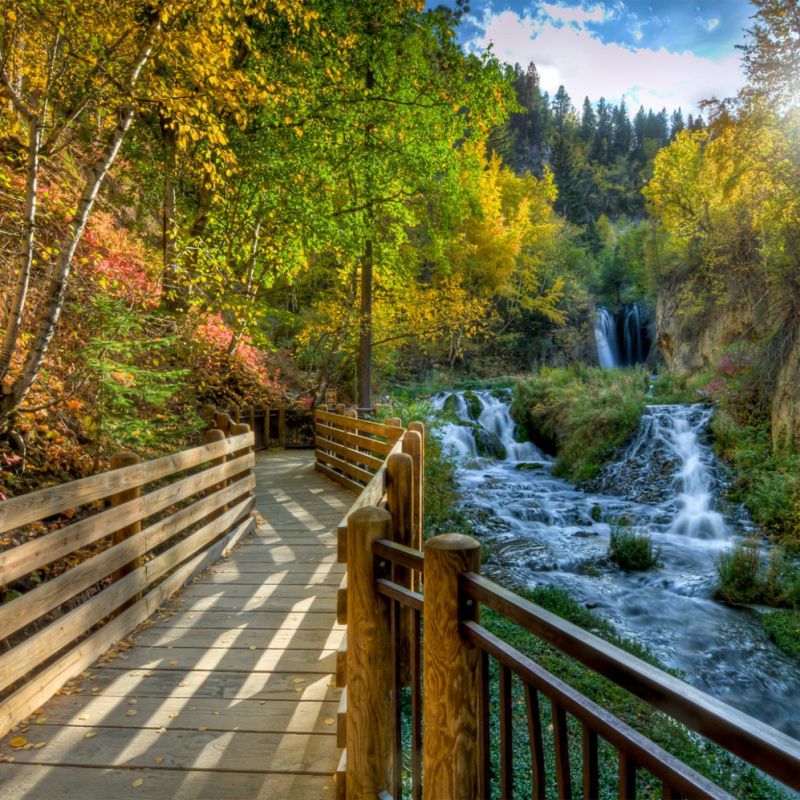
Limestone walls rise 1,000 feet from the canyon floor, creating a dramatic backdrop for this 19-mile mountain passage. Once traversed only by Lakota hunters and later by gold miners, the canyon became accessible to travelers when the railroad arrived in 1893.
Bridal Veil Falls cascades 60 feet down moss-covered rock, creating a misty veil that’s especially photogenic during spring runoff. Roughlock Falls offers a more accessible viewing platform where scenes from “Dances with Wolves” were filmed.
Autumn transforms the canyon into a kaleidoscope of red, orange and gold as aspens, birch, and oak trees prepare for winter. Fly fishermen wade into Spearfish Creek’s clear waters year-round, casting for the brook and brown trout that thrive in the cool mountain stream.
7. Crazy Horse Memorial
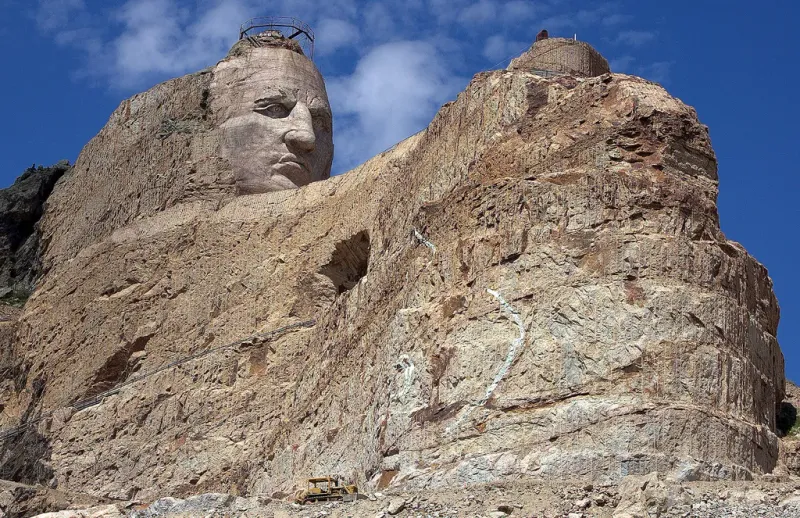
When completed, this mountain carving will dwarf Mount Rushmore, standing 563 feet high and 641 feet long. Lakota Chief Henry Standing Bear invited sculptor Korczak Ziolkowski to create a monument honoring Native American heritage, beginning work in 1948 with just $174 and a jackhammer.
Korczak declined government funding, insisting the memorial remain privately funded to preserve its vision. Though he died in 1982, his wife Ruth and seven of their children continued his work until her passing in 2014.
The face was completed in 1998, and work continues on the outstretched arm pointing toward tribal lands. The Indian Museum of North America houses over 11,000 artifacts celebrating Native cultures, while the annual Volksmarch allows hikers rare access to climb to the top of the carving.
8. Deadwood Historic District
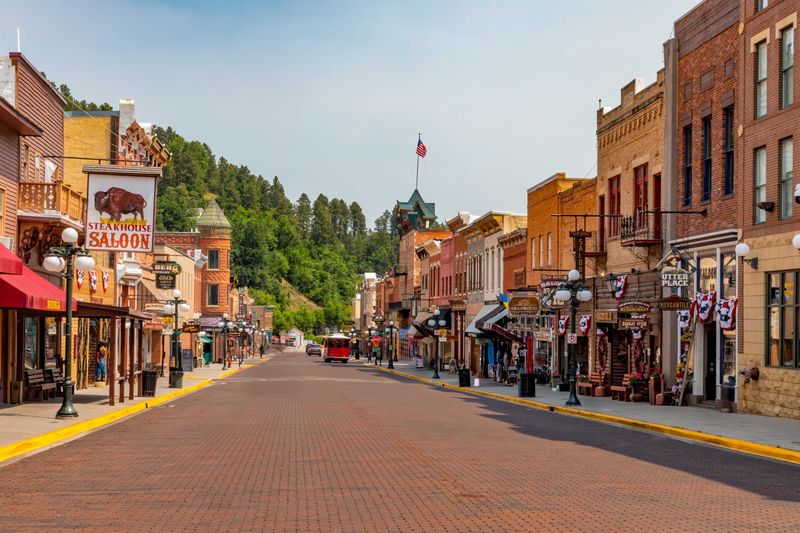
Gold fever transformed this Black Hills gulch into a lawless boomtown where legends were born and fortunes lost. Wild Bill Hickok met his end here in 1876, shot while holding aces and eights – forever known as the “dead man’s hand.”
Saloon No. 10 recreates the fateful poker game daily, while Mount Moriah Cemetery houses both Hickok and Calamity Jane in eternal rest. After dark, ghost tours reveal spine-tingling tales of the Adams House, where apparitions appear in mirrors and phantom footsteps echo through empty hallways.
Restored Victorian architecture lines Main Street, housing modern casinos alongside museums preserving the town’s rowdy past. The Broken Boot Gold Mine offers underground tours where visitors can try their hand at panning for gold – a fitting tribute to the precious metal that birthed this National Historic Landmark.
9. Palisades State Park
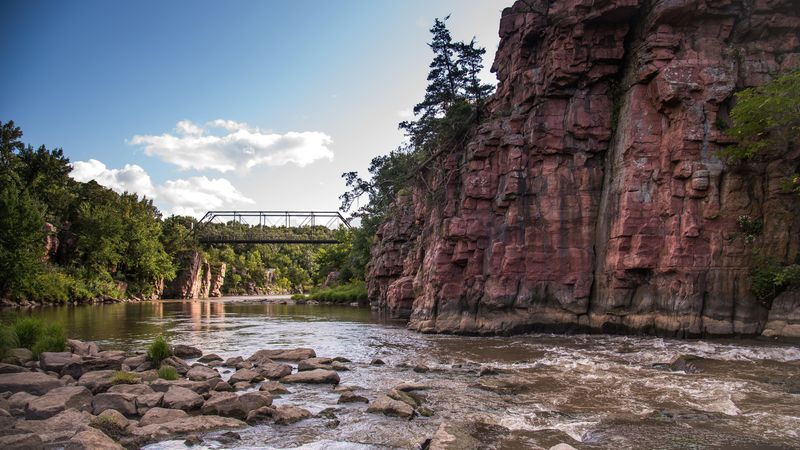
Rose-hued quartzite cliffs rise dramatically from Split Rock Creek, creating South Dakota’s most unexpected landscape just 20 miles from Sioux Falls. These 1.2-billion-year-old formations began as sand at the bottom of an ancient sea before being compressed into stone and thrust upward by geological forces.
Balancing Rock defies gravity as it perches precariously atop a narrow base, while Devil’s Gulch challenges visitors to cross a 20-foot chasm where outlaw Jesse James supposedly leaped on horseback to escape pursuers. Native Americans once quarried the distinctive pink stone for ceremonial pipes.
Hiking trails wind between towering spires and along creek banks where kingfishers dive for minnows. Rock climbers test their skills on vertical faces while kayakers navigate gentle rapids beneath the historic 1908 King Bridge spanning the creek.
10. Wall Drug Store
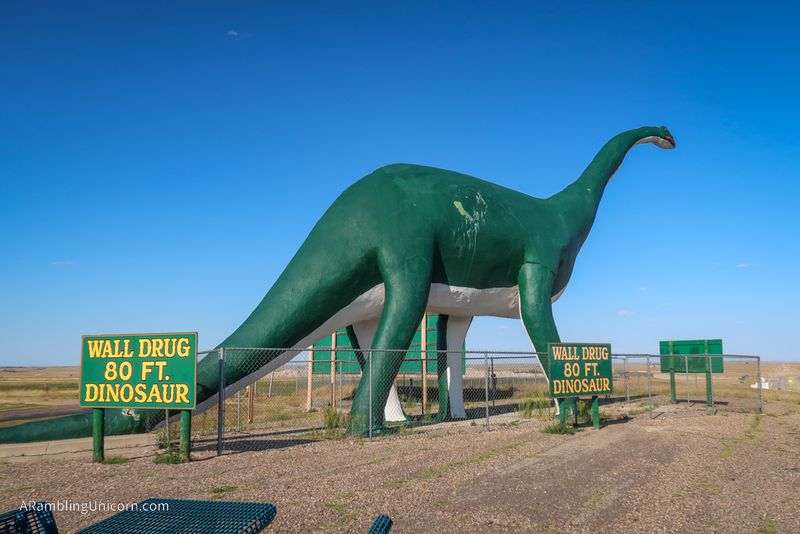
Free ice water transformed a struggling Depression-era pharmacy into America’s favorite roadside attraction. Ted and Dorothy Hustead purchased the store in 1931, nearly giving up until Dorothy’s brilliant marketing idea: offering free ice water to hot, thirsty travelers heading to Mount Rushmore.
Today, over two million visitors annually descend upon this 76,000-square-foot wonderland of western kitsch. An 80-foot concrete dinosaur looms over the parking lot while the jackalope – a mythical horned rabbit – serves as unofficial mascot.
Beyond the tacky souvenirs lies a surprisingly impressive Western art collection featuring over 300 original paintings. The homemade donuts and 5-cent coffee maintain traditions from simpler times, proving that sometimes the journey’s unexpected detours create the most enduring memories.



